Model deployment
Designing Machine Learning Workflows in Python

Dr. Chris Anagnostopoulos
Honorary Associate Professor
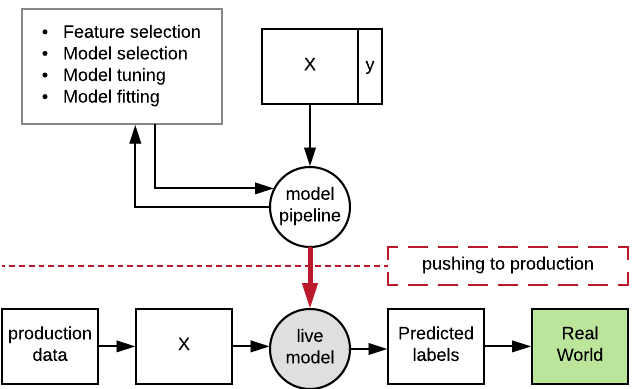
Serializing your model
Store a classifier to file:
import pickle
clf = RandomForestClassifier().fit(X_train, y_train)
with open('model.pkl', 'wb') as file:
pickle.dump(clf, file=file)
Load it again from file:
with open('model.pkl', 'rb') as file:
clf2 = pickle.load(file)
Serializing your pipeline
Development environment:
vt = SelectKBest(f_classif).fit(
X_train, y_train)
clf = RandomForestClassifier().fit(
vt.transform(X_train), y_train)
with open('vt.pkl', 'wb') as file:
pickle.dump(vt)
with open('clf.pkl', 'wb') as file:
pickle.dump(clf)
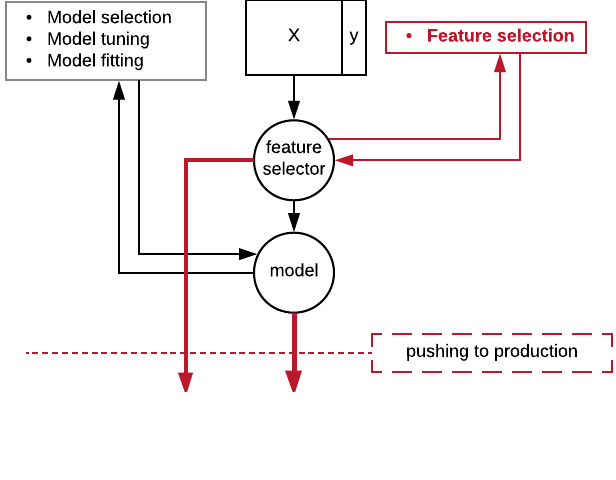
Serializing your pipeline
Production environment:
with open('vt.pkl', 'rb') as file:
vt = pickle.load(vt)
with open('clf.pkl', 'rb') as file:
clf = pickle.load(clf)
clf.predict(vt.transform(X_new))
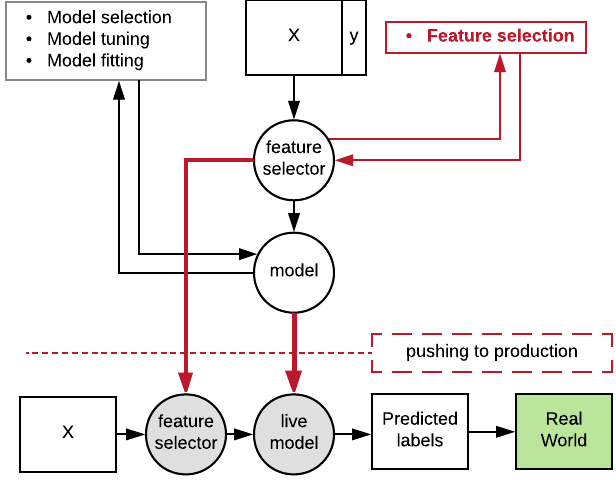
Serializing your pipeline
Development environment:
pipe = Pipeline([ ('fs', SelectKBest(f_classif)), ('clf', RandomForestClassifier()) ]) params = dict(fs__k=[2, 3, 4], clf__max_depth=[5, 10, 20]) gs = GridSearchCV(pipe, params) gs = gs.fit(X_train, y_train)with open('pipe.pkl', 'wb') as file: pickle.dump(gs, file)
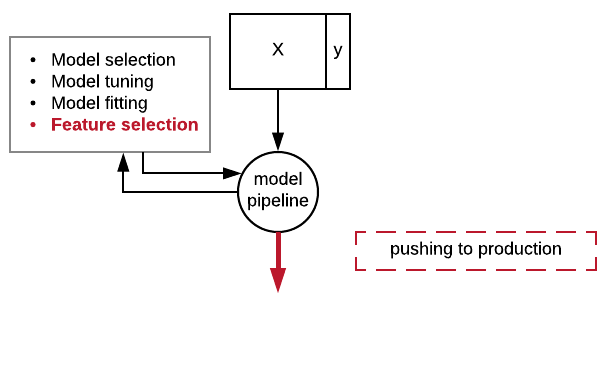
Serializing your pipeline
Production environment:
with open('pipe.pkl', 'rb') as file:
gs = pickle.dump(gs, file)
gs.predict(X_test)
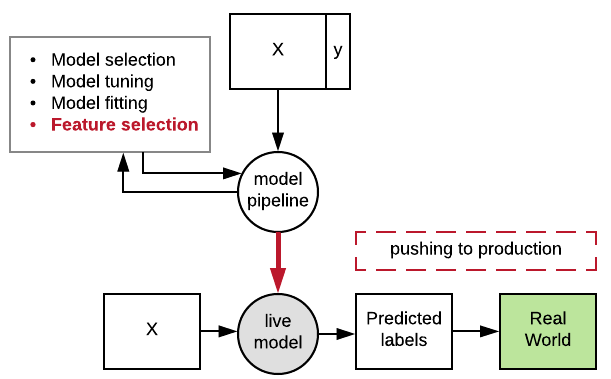
Custom feature transformations
checking_status duration ... own_telephone foreign_worker
0 1 6 ... 1 1
1 0 48 ... 0 1
def negate_second_column(X):
Z = X.copy()
Z[:,1] = -Z[:,1]
return Z
pipe = Pipeline([('ft', FunctionTransformer(negate_second_column)),
('clf', RandomForestClassifier())])
Production ready!
Designing Machine Learning Workflows in Python

